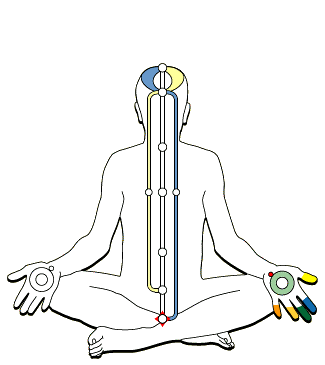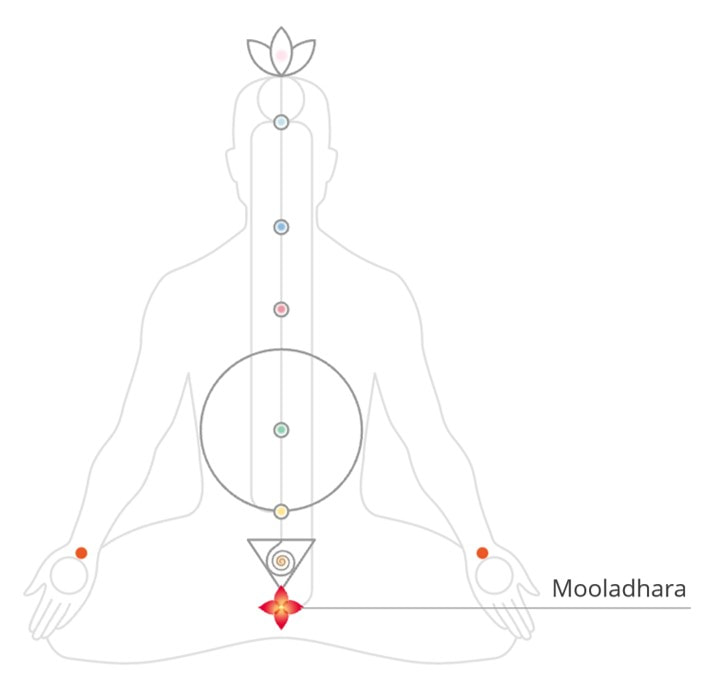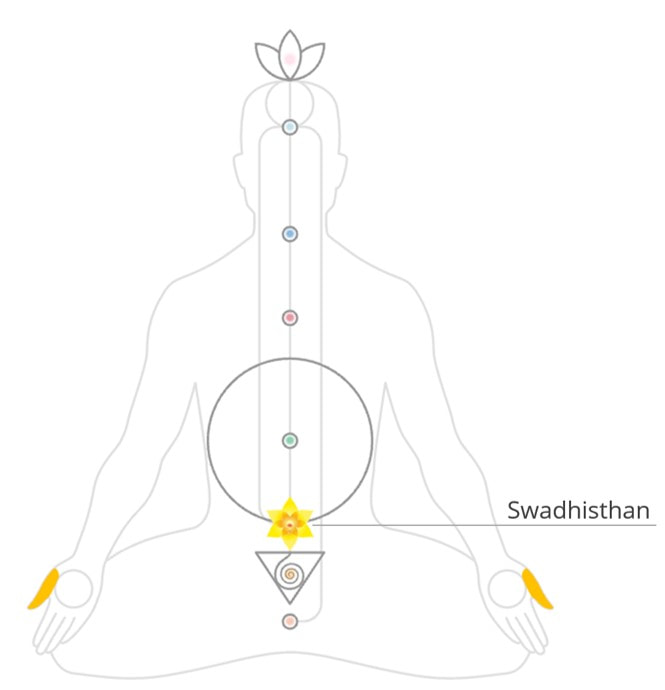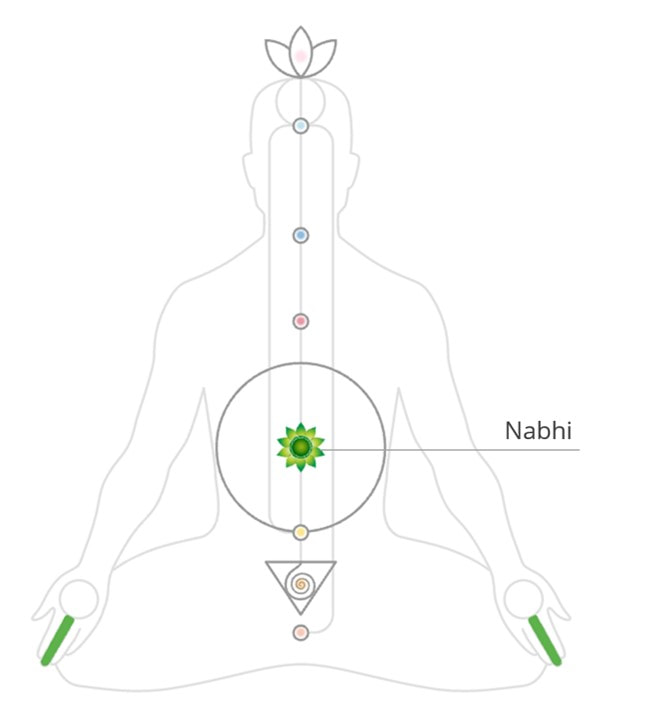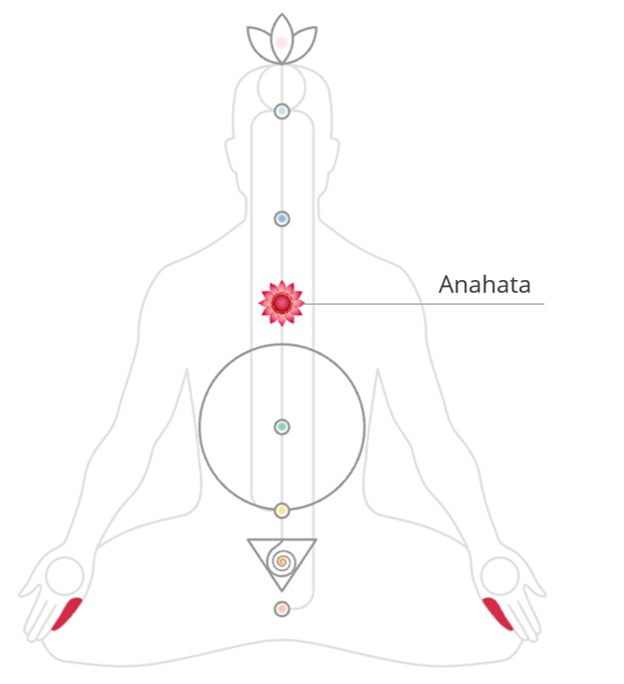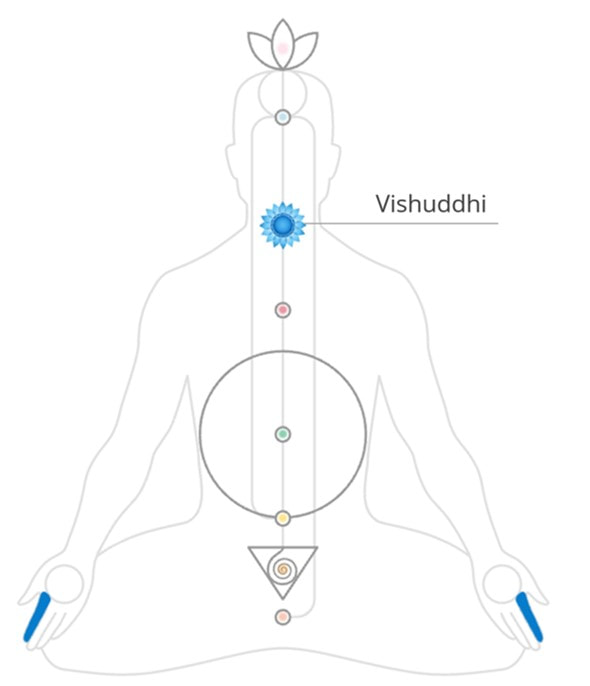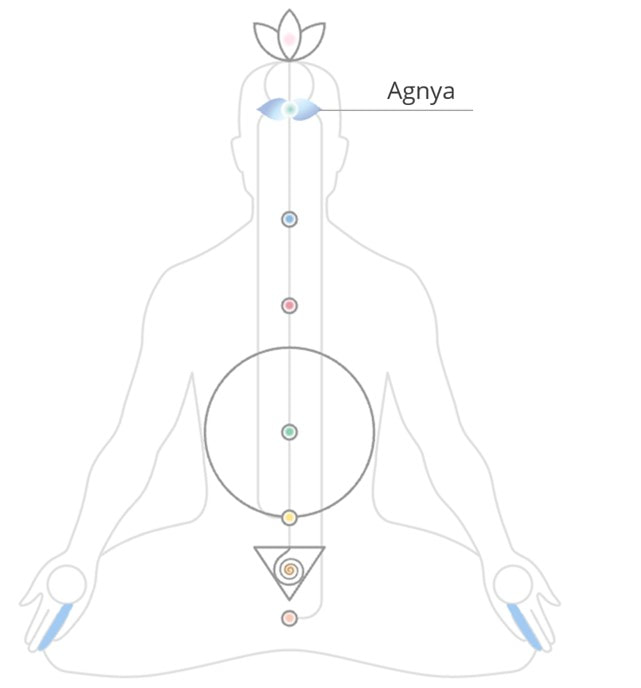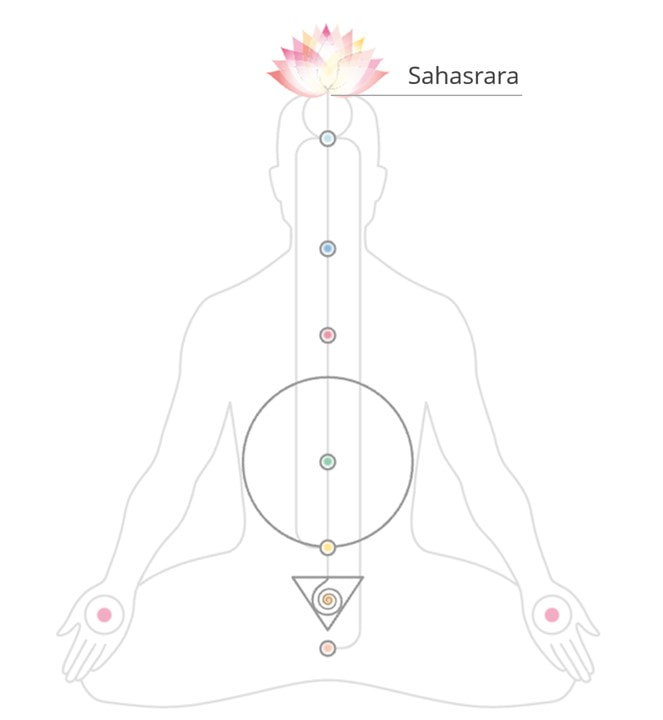|
Energy centers, also known as chakras in Sanskrit, literally meaning wheel. These chakras correspond to the main nerve plexuses along our spine. Each chakra governs certain mental, physical and emotional traits within us.
When our Inner Energy flows through these chakras, it energizes, nurtures and balances them. To visualize how energy flow works, imagine your subtle energy system as a flute with seven holes. Each hole represents a chakra. The air blown through the flute represents your Inner Energy. If the flute’s holes are unobstructed, the flute can produce melodious, harmonious music. When our chakras are clear and free of obstructions, your Inner Energy flows through our body smoothly, achieving a harmonious balance. |
1. MooladharaInnocenceThe Mooladhara is the root chakra. It represents the earth element and helps keep us 'grounded'. In Sanskrit mool means root and adhara means support - so Mooladhara Chakra translates to the supporter of our subtle system.
The fundamental quality of this chakra is innocence and the purity of joy that comes with it. Through meditation we learn to be less motive-led in our actions and to rediscover the wisdom which makes us self-correcting. The chakra is represented by a corol red colour and it's vibrations can be felt on the base of the palm. This energy center is located in our pelvic plexus and governs the excretory and reproductive organs. |
2. SwadhisthanCreativityThe Swadisthana is the second chakra. The word's literal translation from Sanskrit is 'one's own place'. This chakra is our place of desire, knowledge, and attention. It therefore, governs the quality of creativity within us.
When this chakra is balanced, it helps us stay fully focussed on the present moment. This way we can be attentive and productive, without excessive thoughts, doubts, and distractions. Such a peaceful state leads to enhanced creativity. This chakra is represented by the colour yellow, and aligned with the purifying element of fire. The vibrations of your Swadisthan chakra can be felt in your thumbs. This energy center is located in the aortic plexus above our sacrum bone and governs the liver, kidney, spleen, pancreas, and female reproductive organs. |
3. NabhiInner peaceThe Nabhi is our third chakra. In Sanskrit, the word means 'navel' or 'one's nucleus'. This chakra is our nucleus of contentment with oneself. Once we are content with ourselves, we have the desire to give and grow. This contentment can only be felt with self-mastery over our body, mind, emotions and senses.
This chakra can often get unbalanced due to excessive worrying about the future, feeling dominated by the external environment, and unbalanced eating and consumption. When this chakra is balanced, it makes us feel fulfilled, generous, dynamic and peaceful by freeing us from being slavish to our environment. This chakra is represented by the colour green, and aligned with the essential element of water. It's vibrations can be felt on our middle finger. This energy center is located parallel to our navel, around the solar plexus and governs abdominal organs, such as stomach, liver, spleen. |
4. AnahataSecurityThe Anahata is our fourth chakra. In Sanskrit, the word means 'unhurt' or 'unlimited'. This chakra is our center of feeling and giving unlimited love and feeling secure, self-assured, and confident.
This chakra can often get unbalanced due to fear, anxieties or lack of balance in responsibilities, which can often tend to have physiological reactions in the form of shortness of breath, palpitations etc. This chakra is represented by the colour red, and aligned with the essential element of air. It's vibrations can be felt on our little finger. This energy center is located within our spinal column. It may be found at the level of the center of our chest, behind our sternum bone. Associated with our cardiac plexus. The chakra governs regulation of our heart and lungs, organs that control the health of our circulatory and respiratory systems. |
5. VishuddhiCommunicationThe Vishuddhi is our fifth chakra. In Sanskrit, the word means 'especially pure or genuine'. This chakra helps us to communicate with purity and genuineness; devoid of ego, guilt or excessive attachment.
This chakra can often get unbalanced due to feeling too attached to people and surroundings, feeling guilty, and speaking harshly or with sarcasm. A balanced Vishuddhi chakra helps us be polite, respectful of self and others, and free from attachments. This chakra is represented by the colour blue, and aligned with the essential element of ether. It's vibrations can be felt on our index finger. This Vishuddhi chakra is located in our cervical plexus - in the neck and throat region of our body, which is also closely connected to our shoulders, mouth and ears. |
6. AgnyaForgivenessThe Agnya is our sixth chakra. In Sanskrit, the word means 'to perceive' or 'to command our thoughts'. This chakra helps us to perceive everything in the light of wisdom and forgiveness and command our thoughts to be silent, so we can enjoy the peace of thoughtlessness.
This chakra can often get unbalanced due to excessive thinking, holding on to the past and lack of forgiveness for self and others. Our right Agnya is referred to as our Ego. It crosses over to the left side of our brain. While ego is important as it helps us create our identity, do our work and be dynamic. Excess of ego can lead to an inflated sense of superiority over others. Our left Agnya is referred to as the super ego and crosses over to the right side of the brain. Again, while super ego is important as it helps us relate to others and be sensitive, excess of super ego can lead to a deflated sense of self. A balanced Agnya chakra helps us be peaceful by freeing us from the bondage of resentment. This chakra is represented by the colour silver, and aligned with the essential element of light. It's vibrations can be felt on our ring finger.It is located within the junction of our optic nerve fibers in the center of our forehead. |
7. SahasraraIntegrationThe Sahasrara is our seventh chakra. In Sanskrit, the word Sahasra means one thousand. This chakra is said to be like a flower with a thousand petals, which correspond to the thousand nerves which end in the limbic area where our Sahasrara chakra is situated.
When we enter a blissful state of thoughtless awareness, the one thousand petals of this chakra begin to open and enlightenment begins to manifest. We may experience a pulsation at the fontanelle bone, followed by a subtle flow of cool vibrations. This chakra is located within our brain’s limbic system. We may feel the vibrations of the Sahasrara chakra in the center of our palm. |
